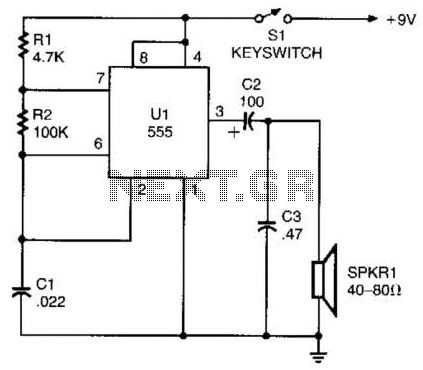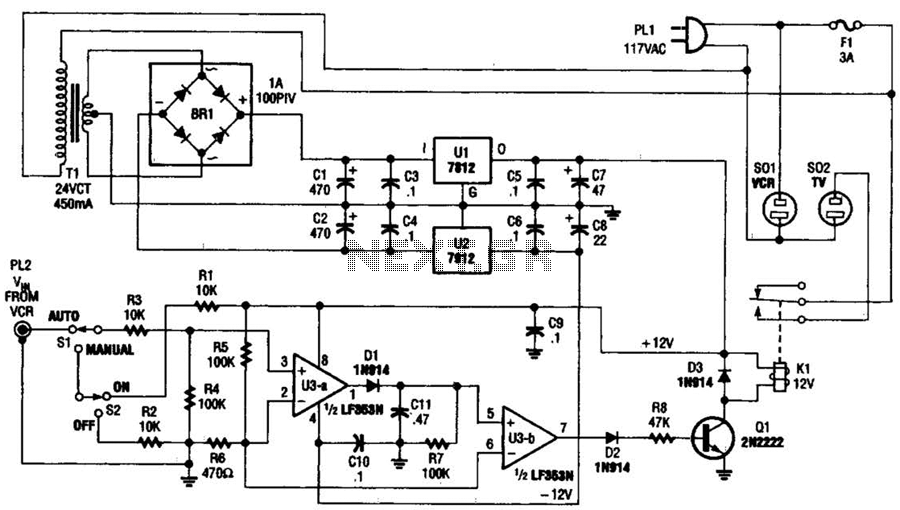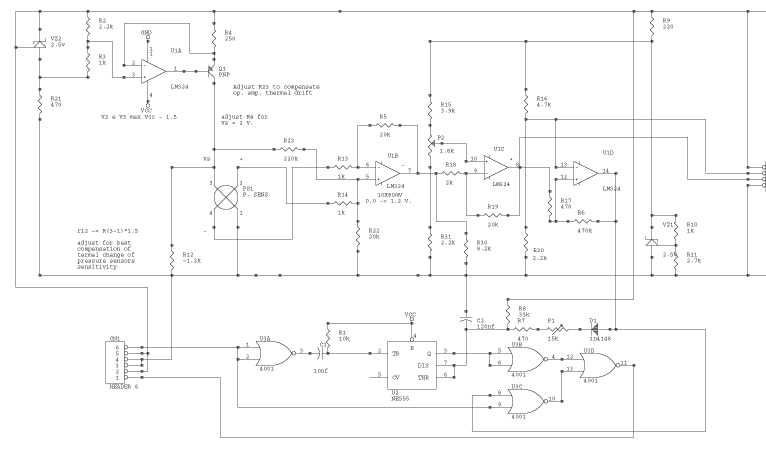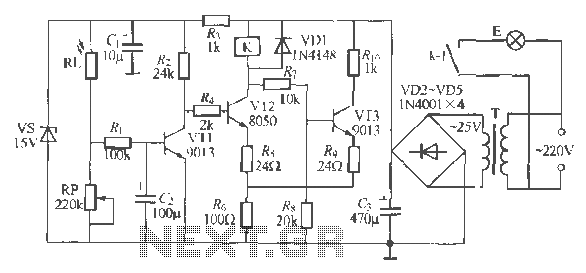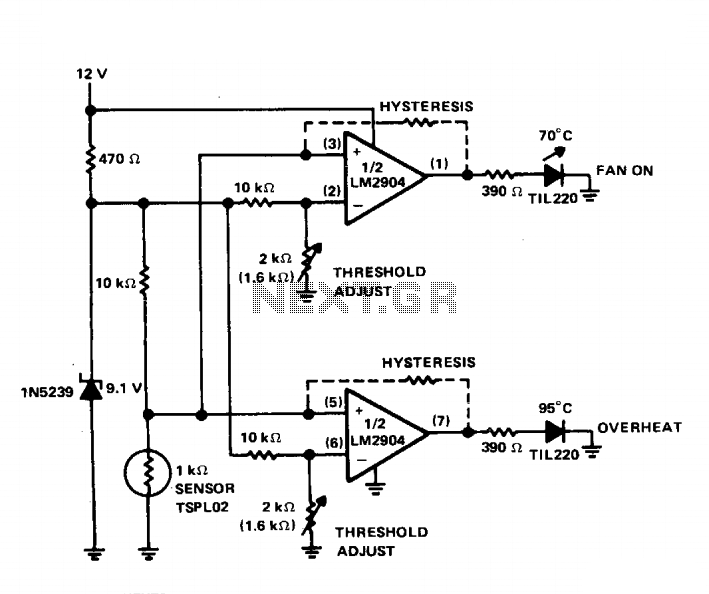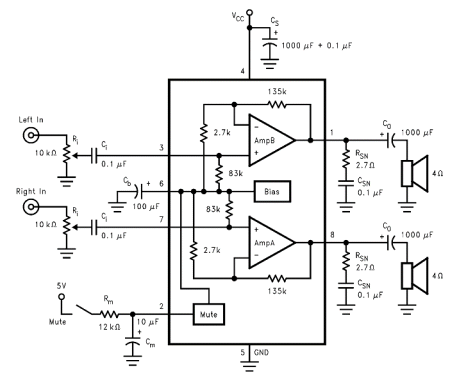
4511B Common-Anode Display Driver Circuit
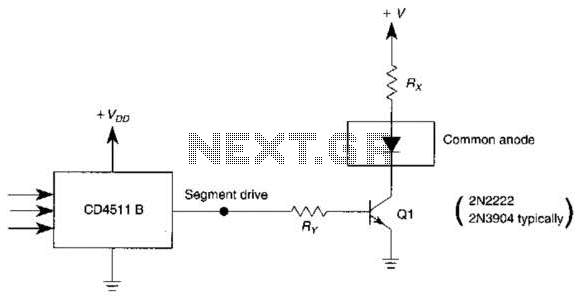
The use of a switching transistor, such as a 2N2222 or 2N3904, enables the operation of the CD4511B with a common-anode display. The transistor should be selected to provide approximately 1 mA to drive Q1, while resistor Rr must supply sufficient current to drive the display. Additionally, the transistor gain (Hfe) should be at least equal to the ratio of the segment drive current to the current flowing through resistor R.
In this circuit configuration, the CD4511B is a BCD to 7-segment latch/decoder/driver that can drive a common-anode display. The switching transistors (2N2222 or 2N3904) are employed to control each segment of the display by switching the current on and off. The choice of a common-anode display means that the anodes of all segments are connected to a positive voltage, while the individual cathodes are controlled by the transistors.
The transistor Q1 functions as a switch and is responsible for allowing current to flow through the corresponding segment of the display when activated. The base of the transistor is driven by the output of the CD4511B, which is connected through a current-limiting resistor to ensure that the base current is within the safe operating limits of the transistor. The value of this resistor can be calculated based on the desired base current and the voltage levels in the circuit.
Resistor Rr is crucial as it provides the necessary current to illuminate the display segments. The value of Rr should be determined based on the forward voltage drop of the display segments and the desired segment current, typically around 1 mA. The total current through Rr must be sufficient to drive all segments that may be lit simultaneously, taking into account the maximum number of segments that could be activated at one time.
The gain of the transistor (Hfe) is an important parameter in ensuring that the circuit operates correctly. It should be selected to be higher than the ratio of the segment drive current to the current flowing through resistor R, ensuring that the transistor can adequately switch the required current without entering saturation.
In summary, this circuit effectively utilizes switching transistors to drive a common-anode display, with careful consideration given to the selection of components and their respective values to ensure optimal performance and reliability. The use of a switching transistor (like a 2N2222 or 2N3904) allows use of the CD4511B with a common-anode display. should be chosen to provide about 1 mA to drive Ql and Rr should provide enough current to drive the display.
For this circuit, the transistor gain (Hfe) should be at least the ratio of the segment drive current to the current through R.
In this circuit configuration, the CD4511B is a BCD to 7-segment latch/decoder/driver that can drive a common-anode display. The switching transistors (2N2222 or 2N3904) are employed to control each segment of the display by switching the current on and off. The choice of a common-anode display means that the anodes of all segments are connected to a positive voltage, while the individual cathodes are controlled by the transistors.
The transistor Q1 functions as a switch and is responsible for allowing current to flow through the corresponding segment of the display when activated. The base of the transistor is driven by the output of the CD4511B, which is connected through a current-limiting resistor to ensure that the base current is within the safe operating limits of the transistor. The value of this resistor can be calculated based on the desired base current and the voltage levels in the circuit.
Resistor Rr is crucial as it provides the necessary current to illuminate the display segments. The value of Rr should be determined based on the forward voltage drop of the display segments and the desired segment current, typically around 1 mA. The total current through Rr must be sufficient to drive all segments that may be lit simultaneously, taking into account the maximum number of segments that could be activated at one time.
The gain of the transistor (Hfe) is an important parameter in ensuring that the circuit operates correctly. It should be selected to be higher than the ratio of the segment drive current to the current flowing through resistor R, ensuring that the transistor can adequately switch the required current without entering saturation.
In summary, this circuit effectively utilizes switching transistors to drive a common-anode display, with careful consideration given to the selection of components and their respective values to ensure optimal performance and reliability. The use of a switching transistor (like a 2N2222 or 2N3904) allows use of the CD4511B with a common-anode display. should be chosen to provide about 1 mA to drive Ql and Rr should provide enough current to drive the display.
For this circuit, the transistor gain (Hfe) should be at least the ratio of the segment drive current to the current through R.
